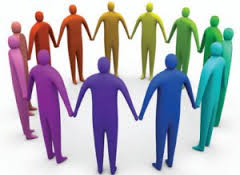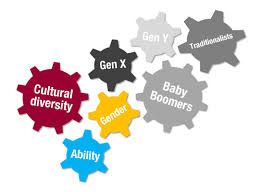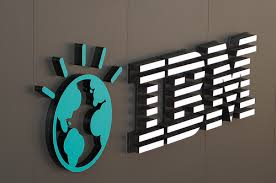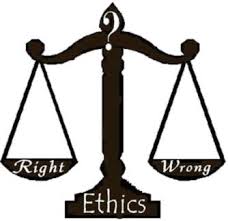I have a strong determination to become an honest, empathetic and impactful leader. In my opinion, a good leader needs to always understand the employees and protect them from unrealistic demands. Then, always lead the team to move to the same direction and goal. Inspiration and motivation to the team is necessary all the times. As a good leader also need to be a good role model of honesty, integrity, attitude and work ethic.
From these couple of years, the CEO of Starbucks, Howard Schultz has brought me some positive influences and inspirations about the leadership.
Source: Google free download image
Although Howard Schultz is from a poor family, he never gives up his dream but continues his courage, hard work and determination to achieve his goal. Under his outstanding leadership and well-planned business strategy, Starbucks from a small Seattle coffee shop become a worldwide well-known brand (Forbes 2015). Even he is in the glow of his own success, he also interested in helping others to succeed as well. He plans to pay for all his employees to get a degree. Furthermore, he concerns about employee’s welfares and benefit. He offers medical insurance to all employee even part-timers and encourages environmental or societal projects (Fortune 2015).
Moreover, Transformational leadership is applied by Howard Schultz in his business management world. He is confident and able to convey a clear vision to the team. He executes the changes and able to inspire the followers to move towards common goal. Empowerment strategy applied in the organization can assist in workforce development and retain employee’s loyalty (Conger & Kanungo 1988).
Below is a link shows Howard Schultz’s leadership insight at the London Business Forum:
The McKinsey 7-S model can be used by leader in managing a team successfully. The leader can identify what needs to be realigned to improve the performance, or to maintain the alignment during the period of change (Mindtools 2015). Thus, the leader can understand the employee better and motivate them to strive for company’s vision. This framework has been collaborated with leader’s role for bringing organizational change and excellence (Singh 2013).
The McKinsey 7-S model involves 7 factors which are categorized as “hard” or “soft” elements. Combination of “hard” and “soft” elements will create a harmony atmosphere. Organizational communication problems can be effectively resolved in by aligning the McKinsey’s 7-S model with transformational leadership.
Figure 10: McKinsey 7S framework
The link below shows the McKinsey 7S Framework and learns how to align all parts of organization’s strategy:
I have done the MBTI personality type test and get the result as sensing types, ISFJ. The details of the personality type test result are shown in Figure 11 below. Based on the result explanation, I am someone very responsible, work devotedly to meet the obligation (Human Metrics 2015). Moreover, I am very patient with necessary details, considerate and concerned with how other people feel (Human Metrics 2015). Hence, I believe that I can be the leader who always concerns the employee and motivate them all the times. They will work with me loyalty and devotedly due to the mutual understanding among us.
Figure 11: My MBTI personality type test result
In conclusion, I believe that I can achieve my vision of leadership. My personality is suitable for the leadership style which I am desired. Situational leadership will be applied in my working life as well to ensure mutual communication happens all the times. After determining the ultimate state for each potential factor, I can move the organization or team forward. It is important for a leader to use the emotional intelligence, be flexible and apply the right strategy at the right time. Leading an outstanding team to achieve the company business goal successfully will be a high satisfaction for me. It will be a great experience for achieving something important in our life. I will continue to improve myself and equip myself with all the necessary skills in order to achieve my personal goal and become a great leader.
List of references:
- Conger, J. & Kanungo, R. (1988) ‘The Empowerment Process: Integrating Theory and Practice’ The Academy of Management Review [online] 13 (3), 471-482. available from < http://www.jstor.org/stable/258093?seq=1#page_scan_tab_contents> [18 July 2015]
- Forbes (2015) Top 10 List: The Greatest Living Business Leaders Today [online] available from < http://www.forbes.com/profile/howard-schultz/> [19 July 2015]
- Fortune (2015) The World’s 50 Greatest Leaders (2014) [online] available from < http://fortune.com/2014/03/20/worlds-50-greatest-leaders/> [19 July 2015]
- Mindtools (2015) The McKinsey 7-S Framework [online] available from < http://www.mindtools.com/pages/article/newSTR_91.htm> [19 July 2015]
- Human Metrics (2015) ISFJ Introverted Sensing Feeling Judging [online] available from < http://www.humanmetrics.com/personality/isfj> [19 July 2015]
- Singh, A. (2013) ‘A Study of Role of McKinsey’s 7S Framework in Achieving Organizational Excellence.’ Organization Development Journal [online] 31 (3), 39-51. available from < http://web.b.ebscohost.com.ezproxy.inti.edu.my:2048/ehost/detail/detail?vid=4&sid=c37273a0-364e-4847-aa7c-3bd11b741c44%40sessionmgr114&hid=107&bdata=JnNpdGU9ZWhvc3QtbGl2ZSZzY29wZT1zaXRl#db=bth&AN=94502348> [18 July 2015]





















